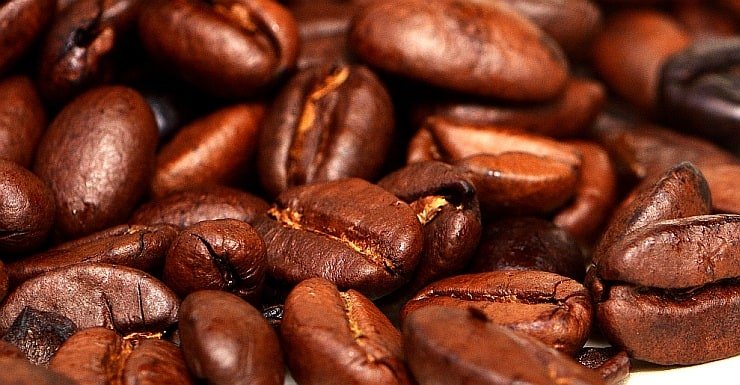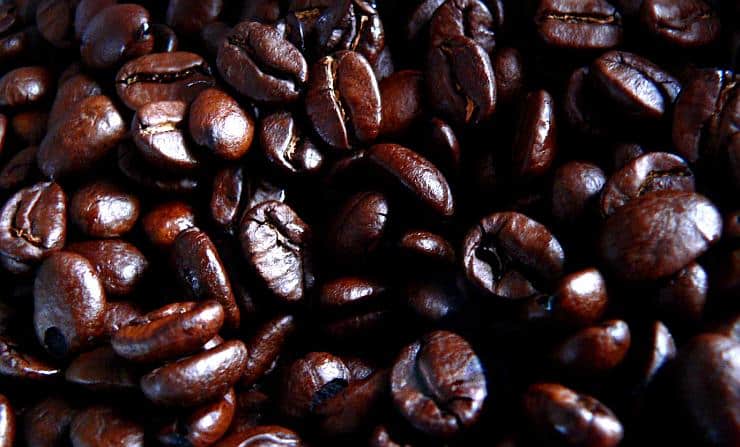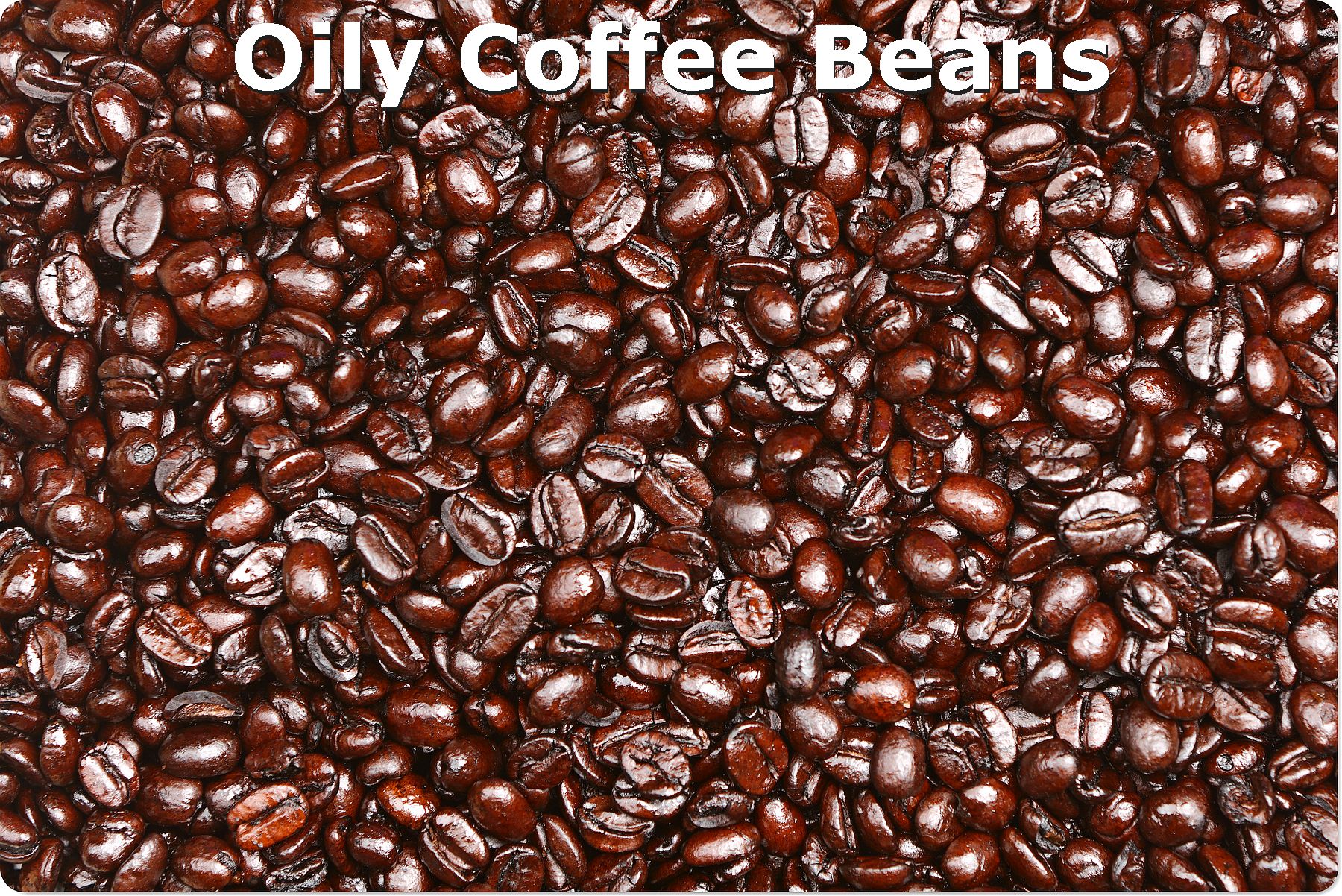I’ve heard different opinions on oily coffee beans throughout my love affair with coffee. Some people love their beans to look oily, some never buy beans that have oil on them, but most people couldn’t tell me why they didn’t like the oily beans.
There is sometimes a negative association with a shiny coffee bean, even amongst baristas and coffee aficionados – I’ll explain why in a bit. On the other hand, the oil in coffee is one of the qualities that sets a cup up for a great taste profile.
Oily coffee beans have a bad reputation. Oily beans are not necessarily a bad thing. Learn when to avoid oily beans and what is god and bad about them.
Oily Coffee Beans – What Does It Mean?
This is a very discussed subject, and again not fully understood. Oily beans are not necessarily a bad thing. I heard people blaming oily coffee for poor brewing results, and some people even saying that coffee was rancid because of the oil.
None of these are true. The oil in the coffee beans is very important for the end result of the brew. Coffee beans contain oil which is released in the roasting process with the darker roast. Without the oil in the beans, espresso would have no “crema”, the foamy layer would be nonexistent. A lot of the aromas and flavors of the darker roast beans come from the oils. So oil in the beans is normal.
Why are some coffee beans shiny?
During the roasting process, gases and oils are extracted from the coffee bean. The longer the beans are roasted for, the oilier they are. This is the reason that dark roasted coffee beans will normally be oily. So now we can already state, at this early point in the article, that an oily coffee bean is neither good or bad: it is simply a typical property of dark roasted coffee beans.

Note that coffee beans are very darkly roasted but they are not shiny. Beans are either very fresh, or too old.
Why don’t We Always See the Oils if it’s Normal?
Depending on the roast level, the oils start to surface the coffee bean between the third day of roasting and three weeks. So you could have beans roasted 2 weeks ago and see no trace of oils, yet the oils are there, they just didn’t surface. There is a saying that if there is no oil on the beans, the coffee is either too young or too old.
Moreover, the roast level will influence how fast the oils will get to the surface from inside the coffee bean. Darker roasts are exposed longer times to heat, and the cell structure is modified more drastically than lighter roasted beans. The longer we roast the darker the beans, an the easier is for oils to travel to the surface.
It is only normal to see darker beans get shiny faster. Their shelf life is also shorter, because oils are only one aspect that gets lost. Along with oils we lose the aromatic compounds that give coffee flavor and bouquet. That doesn’t mean oily beans are bad, it only means we have to consume them faster, mindful of the shorter shelf life. And choose a better coffee canister to extend that shelf life.
The presence of oils is not indicative of a stale batch, but rather an indication that the batch should be consumed fast, because of the lower shelf life of the dark roasts. After the oils start to be released released, the shelf life gets very short, since the oils and aromatic compounds start to evaporate the minute they surface the bean.
The darker the roast the faster the oils get to the surface. Spanish roasts bring the oils out from the first day after roasting. The oils are released in the roasting process after the second crack. So roasts that don’t involve a 2nd crack will be oil free.
Coffee Bean Roast and Oil Level Estimator
This utility will help you estimate if your beans are still going to have flavor, and how the roasting and age will affect you coffee flavor.
Taste profiles
Dark Roast
The longer coffee beans are roasted, the more properties end up burning off the bean. Two of the these are caffeine and sugar. As we’ve previously discussed, there is less caffeine in a dark roast than in a light roast, despite the coffee tasting stronger.
One of the reasons for this is the reduced sugar. This is why darker roasts tend to taste more bitter and less naturally sweet than the lighter roasts.
So, very dark roasts are typically more bitter than lighter roasts. The darker roast brings out the darker, bolder and stronger flavors of the coffee bean. The coffee drinker will also taste those smokier notes that come simply from roasting the bean for longer time. Finally, we get to taste those coffee oils much more, which is a big advantage.
Darker roasts have traditionally been used for espresso coffee. One reason is because the beans cell structure is broken with dark roasts, and it’s easier to extract both soluble solids and coffee oils. A very dark roast is actually not good for espresso, but I’ll talk more about that later.
Lighter roast
In contrast, lighter roasts have more natural sugars and are naturally sweeter than darker roasts. They will be brighter and milder on the palette. Third wave coffee and speciality coffee roasters will normally work with lighter or medium roasts.
A lot of seasoned coffee drinkers, who were around before the speciality coffee movement got going, find lighter roasts to be dull and flavorless. This likely comes from darker roasts, often French roasts, being the primary roast used and sold in the United States.
The aroma of these roasts is more earthy, and the beans are more stable, retaining the flavors for longer time.

Note that there is some oil on these medium roasted coffee beans.
When is the presence of oil on a coffee bean good?
Recent batch
A coffee bean that is oily is actually a good sign. The presence of oil on a darker roasted bean usually means that it has been relatively recently roasted. The oils start to dry up if roasted coffee isn’t used for a while. The longer it sits in storage, the drier it gets. For this reason, we want to avoid coffee that is dark roasted and not oily. The only exception to this is if the coffee has JUST been roasted – I’m talking one to three days. In this case, there will be no oil on the beans. Well roasted beans then become oily in the few days after roasting.
Good roaster
An oily, darker bean normally also means that the roaster had a good idea of what he was doing and the coffee has been roasted well. So, if you like dark roast, look for oily beans folks. Dry dark roast coffee beans are best avoided if possible!
Interesting fact: Optimal time for drinking dark roast after roasting is sooner than for lighter roasts.
Due to the longer roasting process, the properties of the bean have been drawn out and coffee is good to be drunk after a few days with a dark roast. For lighter roasts, they benefit from some more time after roasting for their natural properties to develop more. For optimum notes in lighter coffee, buy coffee that was roasted a week or two ago.
In any case though, try to use coffee that is less than three months old. After this the coffee starts to go stale even though the use-by date is usually around the two year mark!
Why don’t Baristas and Enthusiasts Like a Dark Roast?
I mentioned before that baristas don’t like dealing with dark roast coffee. The absolute darkest you will generally see in a speciality coffee shop is medium dark. Why is this?
Why is Coffee Traditionally Roasted Dark?
Coffee in the last few centuries has been roasted dark for practical reasons. As coffee became more popular, and demand for coffee became greater and greater, coffee roasting companies starting roasting their coffee for longer. In order to keep up with the demand, they bought cheaper coffee, and roasting coffee for longer covers up the bad tastes in a cheaper coffee bean.
In addition to this, logic would suggest the dark roast suits espresso extraction more because espresso brewing brings out those dark, bolder and oilier notes naturally.
Roasters would sell dark roast because it made cheap coffee more drinkable. Coffee drinkers would then taste the smoky notes from the roasting process as opposed to the actual coffee flavors from the bean.
Baristas Use ‘Good’ Coffee
This is why baristas don’t like dealing with darker roasts. Baristas pride themselves on using quality, well sourced coffee. When you dark roast good coffee, you ruin its natural flavor profile.
Having said that, the flavors of some coffee beans, such as those from South American countries like Brazil or Colombia, are complimented by a slightly darker roast. In this case, speciality coffee shops will occasionally roast up to medium dark but never more.
I explain in another article how to choose espresso beans, if you need to delve deeper into the subject.

These beans are great for brewing an amazing espresso. The problem is that most superautomatics and many grinders will get clogged because of the oils.
The problem with dark, oily beans for espresso
Dark, greasy coffee beans are still common place in those big coffee chains (*cough* Starbucks). This makes sense, as their demand for coffee is much higher so they buy cheaper and roast darker.
I have no problem with this. In fact, I think of speciality coffee and Starbucks as completely different animals. Starbucks make a lot of people very happy. If that’s the type of coffee you enjoy then go for it. There is however a problem with using oily beans in an espresso machine.
Oily Beans can Damage Espresso Machines and Grinders
That’s right. The oil produced from darker roasts is harmful for espresso machines, especially super-automatic espresso machines. A lot of the oil from those shiny beans will deposit itself in an espresso machine and grinder. This oil often clogs the machine and cause blockages or gets on the burrs of the grinder, which in turn then stops working. This can be costly.
Now, for coffee giants like Starbucks, they can probably absorb the cost of machine repair and maintenance without even noticing it. Industrial coffee machines are also better built and can handle the oily beans better. This advice really applies more to the home coffee brewer and the domestic espresso machines.
If you check my article about best espresso coffee beans, you’ll see that my recommendations are medium roasts most of the times.
Flavored Coffee can Have the Same Effect
Unfortunately, if you are fan of flavored coffee beans, flavored coffee has the same effect on an espresso machine. If you are a fan of flavored coffee, it is better to add your preferred flavor into the coffee as a syrup, after it has been brewed.
The Solution
The first and obvious solution is to use beans that aren’t darker than medium dark.
Clean your Machine
If you are really married to the darker roast, then regularly cleaning the hopper of your grinder is essential. Otherwise you risk to be servicing or replacing your grinder or super-automatic every six months.
If you can separate the plastic part from the rest of the grinder, you can wash it with hot, soapy water. For any parts of the machine where electricity is used, such as the burrs, stick to using dry kitchen towel to clean the grind as best you can. You can also make good headway with a thin paint brush!
Use Fresher Beans
I will say this again, oily beans are just right, but if you nail that perfect time window between roasting and the day they start releasing oils, you can avoid the headaches of clogging your equipment. The darker the roast, the less time you have.
Barista Anecdotes
During my time as a barista I followed various cleaning schedules of the machine and grinder.
The machine needs to be cleaned well every night without exception. The cleaning of a coffee machine is specific and definitely is best left to another article!
For the grinder, it would vary from place to place. In some coffee shops, the grinder would be cleaned every night. This was the bane of my life at the time as I normally didn’t finish my shift until two hours after we closed! Other places would request that I cleaned the grinder once a week. That is the advice that I would give to the home barista as well. Clean your grinder once a week and you will avoid those oil problems for longer.
Other Brewing Methods
For other brewing methods, it comes down to the grinder you are using. There is a 50% chance that your grinder will not deal well with oily coffee beans.
One problem is at the burrs’ level. Coffee oils will coat the surface of the burrs and in time they will become sticky. This sticky surface will in turn retain finer coffee particles and the burrs will be always coated with rancid coffee. You can solve this by cleaning the grinder more often.
Another problem is the chute clogging. Many grinders are not designed to deal with oily coffee, which clumps together and gets stuck in the chute. There is no real fix for this, I’ve seen people taping the grinder, shaking it, using a stick to unclump the grounds, and even modifying grinding machines to facilitate the grounds to fall through the chute. My advice is to buy a different grinder and make your life easier.
In summary
There is no right or wrong – it comes down to preference. Oily coffee beans are not bad, they are simply a property of a well roasted dark roast. If you love the kick from an extra dark roast, you will get oily beans, but be careful with your espresso machine.
Coffee equipment repair shops make a decent living fixing these machines. So it’s not all that bad, you are supporting the local economy.
Though we do like a strong, bold cup of espresso on this site, an extra dark roast is a little too much for our taste. We prefer a medium to medium dark roast where the natural flavors and sweetness of the coffee bean have still been preserved. What is your preferred type of roast? Let us know in the comments below!

In Ethiopia roasted coffee should be oily. In fact it is described as “butterry.